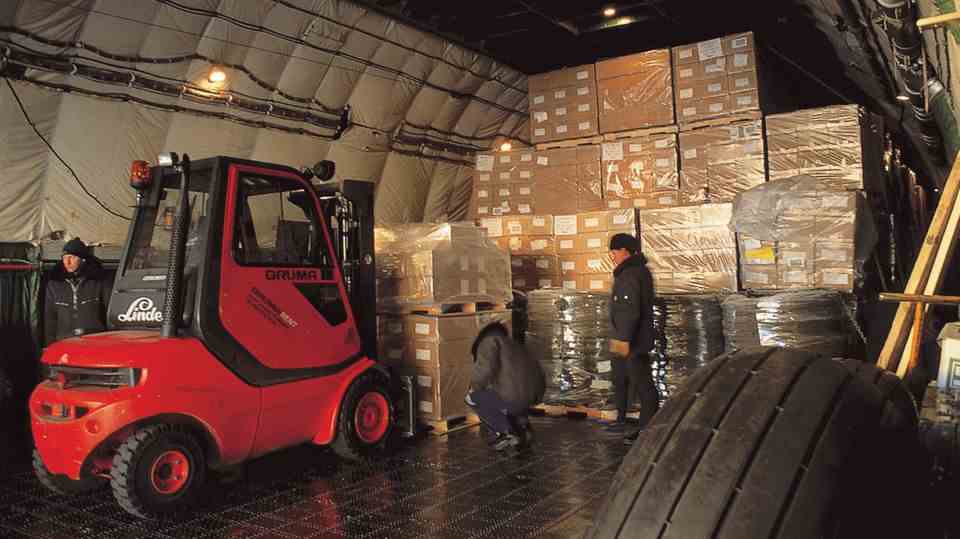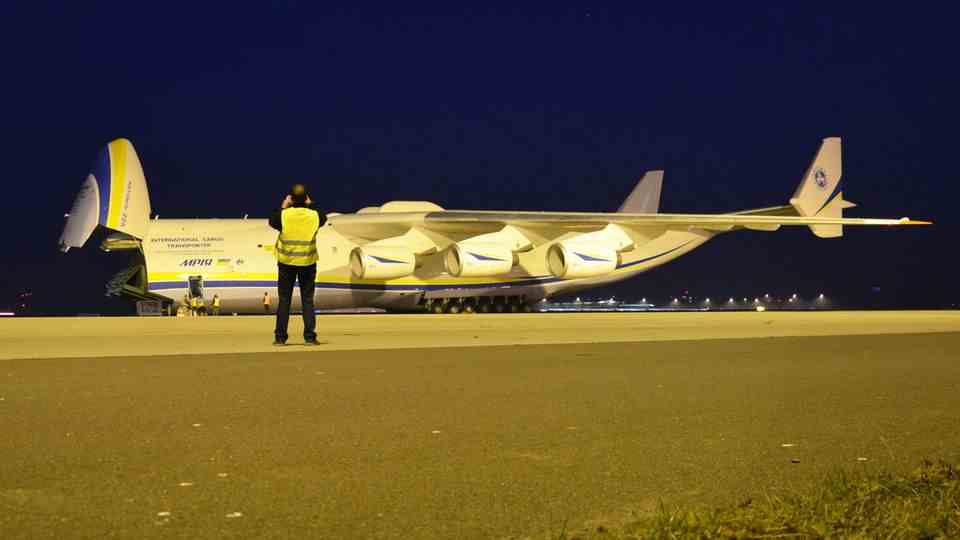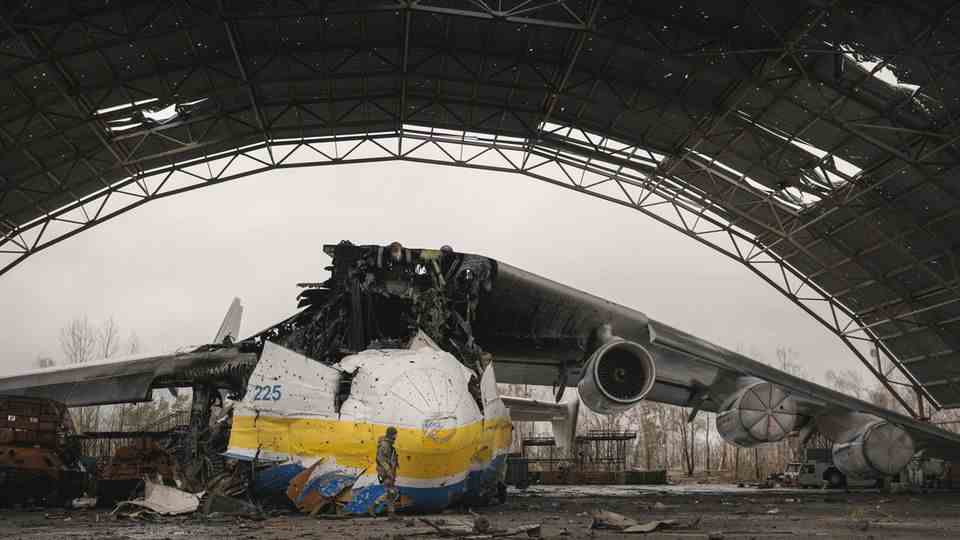Along with the Antonov pilots, he is one of the few who experienced a flight on board the world’s largest cargo plane: the aviation photographer Dietmar Plath. In conversation with the star he remembers a world record flight to Kyiv in the one-of-a-kind aircraft that has now been destroyed by the Russians.
Mr. Plath, in your career you have flown 268 different types of aircraft. What were your highlights?
Dietmar Plath: Undoubtedly two aircraft that are no longer in service today: the Concorde and the Antonow An-225.
How did you end up flying on the cargo plane? You can’t just buy a ticket for that…
… In 2001, after the An-225 had been mothballed from 1994 to 2000, Antonov was licensed to operate worldwide cargo flights. When I heard that, I really wanted to fly. I applied to Antonov. It took half a year before I got the green light from Kyiv.
Had journalists from the West flown with you before?
No, together with Gunter Hartung, in December 2002 we were the first and probably the only ones in the years that followed to lie in the cockpit of the world’s largest aircraft.
On which flight do you smell on board?
This was done through the company Pro Air Charter, which had received the order to transport food rations from Germany to the US armed forces in Afghanistan. On the evening before departure for Kyiv, we witnessed the landing of the giant at Munich Airport and saw the 420 pallets with food packages in the hangar…
… Excuse me, 420 Euro pallets?
That was 250,000 boxes of food rations, the load of 17 trucks. When I saw that, I thought, that will never ever fit on one plane.

Loading 250,000 boxes with food rations for the US military in Afghanistan: The flight from Munich to Bishkek in Kyrgyzstan with 213 tons of air freight was a world record at the time.
© Dietmar Plath
How did the cargo get on the plane?
The Antonow had a loading gate with a ramp at the front, which forklifts drove directly into the interior of the aircraft. The loading process for the 213 tons of air freight took more than ten hours.
What impressed you most about the plane?
Everything was gigantic. The huge cargo hold of 43 meters in length. The chassis alone with 32 tires, I had never seen anything like it before. And the elevator had the wing area of a business jet.
When did it finally start?
The next morning we climbed a seven meter free-standing, almost vertical ladder from the hold into the cockpit, where six people work: the pilot and co-pilot, a navigator, a radio operator and two flight engineers. In addition, there were the loading staff, who had an extra cabin in the rear above the cargo hold. In total we were 22 people. The take-off weight was 563 tons. This was considered the world record for air cargo at the time.
How was the atmosphere in the cockpit?
Quite easy, we settled on a plush sofa in an alcove at the back of the cockpit and didn’t even have to buckle up. That was absurd, we didn’t feel like we were on an airplane, more like we were in a cozy living room.
Were there safety instructions?
No, the crew didn’t give us any instructions. I can still remember them saying: stay calm, everything is relaxed here, nothing is happening here. The two pilots were very proud of their aircraft, the largest in the world, having also been An-225 test pilots back in the late 1980s.
At the start, did it get really loud?
Contrary to expectations, it was quiet, no deafening noise, when the pilot gave full load to the six engines. After 2800 meters, the machine took off gently, very slowly. This mass, this huge block, is almost invulnerable if we hit it, I thought.
How was the flight?
The two-hour, ten-minute flight to Kyiv was quiet. There was no rush, the pilots were very relaxed and confident, just full professionals. Not everyone in the cockpit spoke English. The whole time I had the feeling that they know what they are doing. The plane is my life, the flight captain told us. He would have been born here and would spend his entire professional life in this cockpit.
How hard was it to touch down the 563 tons?
We sat further back in the cockpit and didn’t even notice that we were already on the ground, the landing was so soft. There was no jerking. Suddenly we realized that we were rolling and that we had long been in Kyiv-Hostomel. We stayed in Kyiv at the time because we wanted to see the Antonov Aircraft Works and didn’t fly any further…
… and the crew has refueled?
Yes, because due to the high payload they could not carry as much fuel as usual and fly non-stop. So they put in another intermediate cargo in Russia until they reached Bishkek in Kyrgyzstan.
What went through your mind when you heard the news of the destruction?
It may have been 20 years since the trip, but for me the An-225 was the aircraft of the industry, the king of aviation. There was only one copy. That’s why it was particularly sad for me when the first rumors circulated that the plane had been shot at in Kyiv or had caught fire. At first I still hoped that the damage would be minor. When the confirmation came, I was shocked. Ever since I saw photos of the wreck, I can’t imagine the remains being repaired either. There will never be another plane like this.

Also read:
– Total loss in Kyiv: New photos and videos show the destroyed Antonov An-225
– An-124: Why the Antonovs are so important for NATO and the US economy
– Before the destruction of the “Mriya”: NATO probably recommended Antonov to relocate the An-225 from the Ukraine



